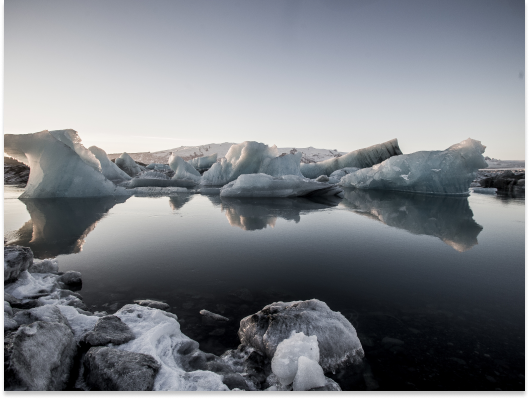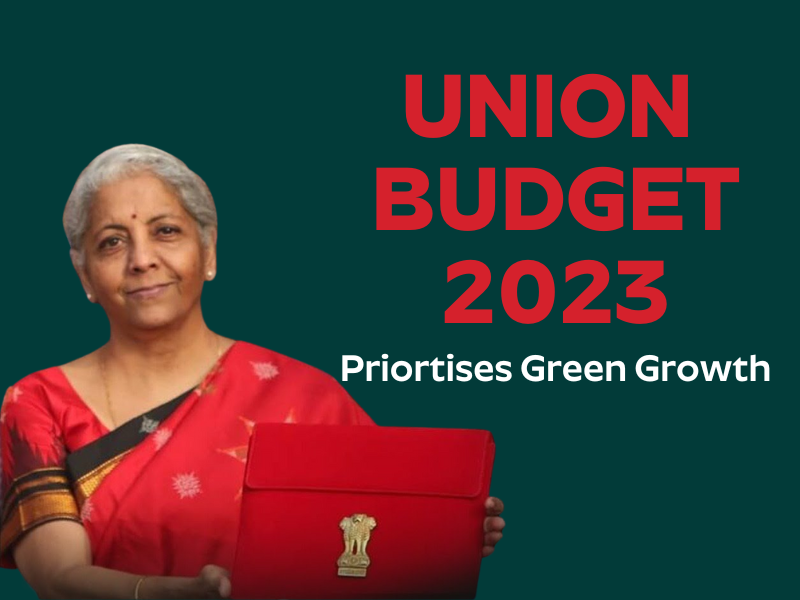Unfortunately, not every human innovation in history has been eco-friendly. The emissions from cars and coal-fired power plants contribute to global warming. Prehistoric air conditioners tore a massive hole in the ozone layer. Pesticides have had a negative impact on ecosystems and even destroyed some. Oceans are literally drowning in plastic.
On the other hand, there are technological advancements that work to repair, protect, and revitalise Earth.
Due to global crises like as climate change, deforestation, and ocean acidification, these advances are now more necessary than ever.
Agricultural Drones with Tree-Planting Capabilities
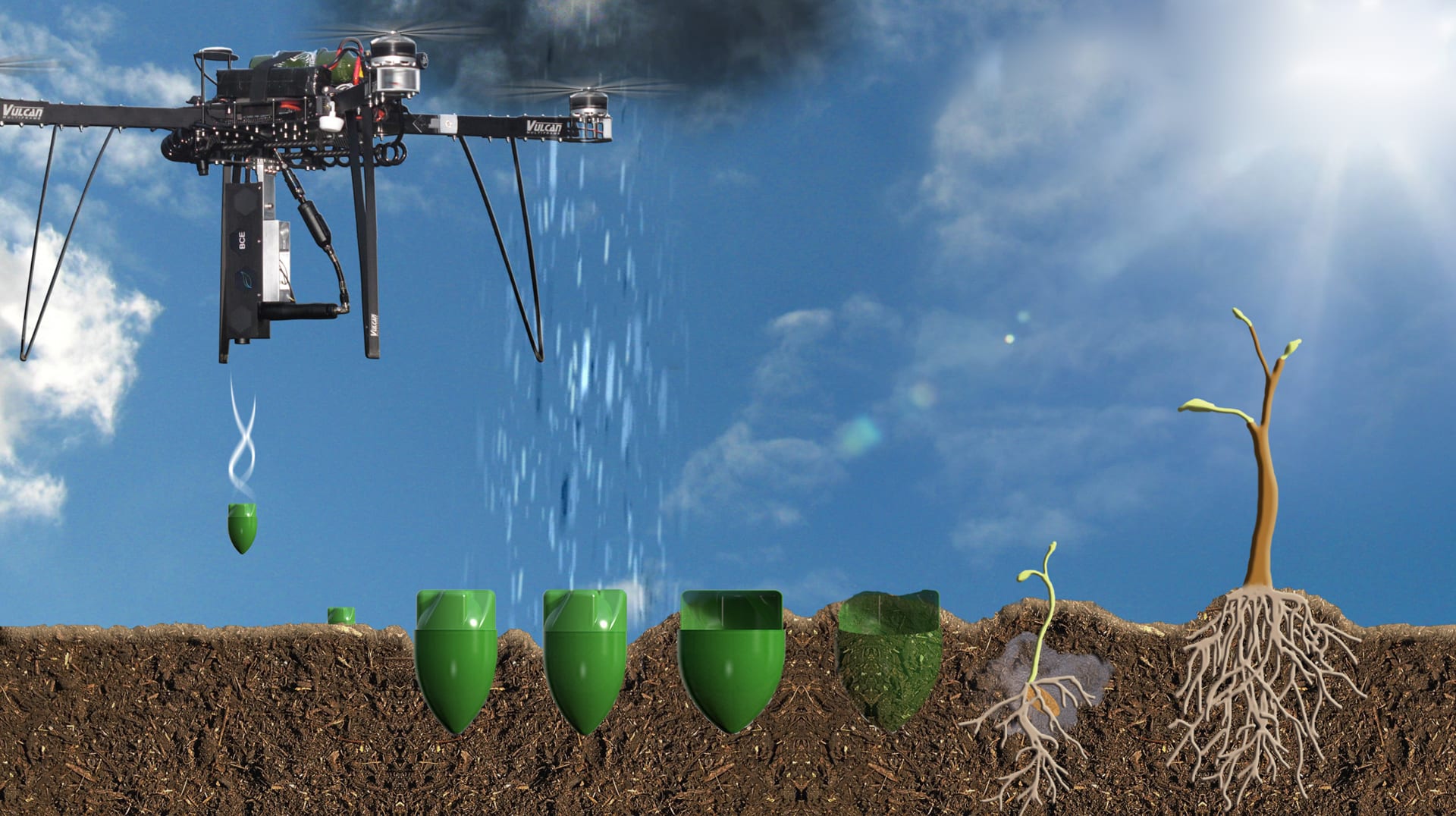
Image: BioCarbon Engineering
Trees play a crucial role in mitigating climate change by sequestering carbon dioxide and other greenhouse gases, purifying the air and water, restoring depleted soil, supporting biodiversity, and supplying human necessities such as food and shelter.
However, the World Wildlife Fund reports that we lose the equivalent of 27 soccer fields’ worth of trees per minute, or 18.3 million acres, of forest each year.
Seeds planted by hand are helpful, but it’s difficult for individuals to keep up with the rate of industrial deforestation.
This is why scientists and engineers all over the world are developing cutting-edge methods.
BioCarbon, a company based in the United Kingdom, is employing drones to spread tree seeds across degraded forest land, with the bold promise that they can plant 1 billion trees year. Sankalp Taru a tree planting organisation. Indian company Marut Drones, which pioneered the use of drones in agriculture and the distribution of vaccines, is now employing the technology as part of the government’s Hara Bhara programme to reforest massive swaths of land.
Planting drones hover six feet above the ground and fire seeds so quickly that they get securely implanted into the soil, a method touted by National Geographic.
Massive, ‘Palm Tree’ Wind Farms

Image: Free think
Despite its potential, wind energy is rarely put to use.
A group of scientists even calculated that a wind farm in the Atlantic Ocean the size of Greenland might produce enough energy to supply the world’s needs, so rendering fossil fuels obsolete.
It’s easy to understand the concept, but putting it into practise is much more challenging. One team of engineers is making strides in this direction by constructing wind turbines that are twice as enormous as the largest turbines currently in operation. According to the New York Times, the 650-foot-tall blades would respond to the speed and direction of wind by bending like palm tree fronds.
Satellites that Can Spot Methane Leaks
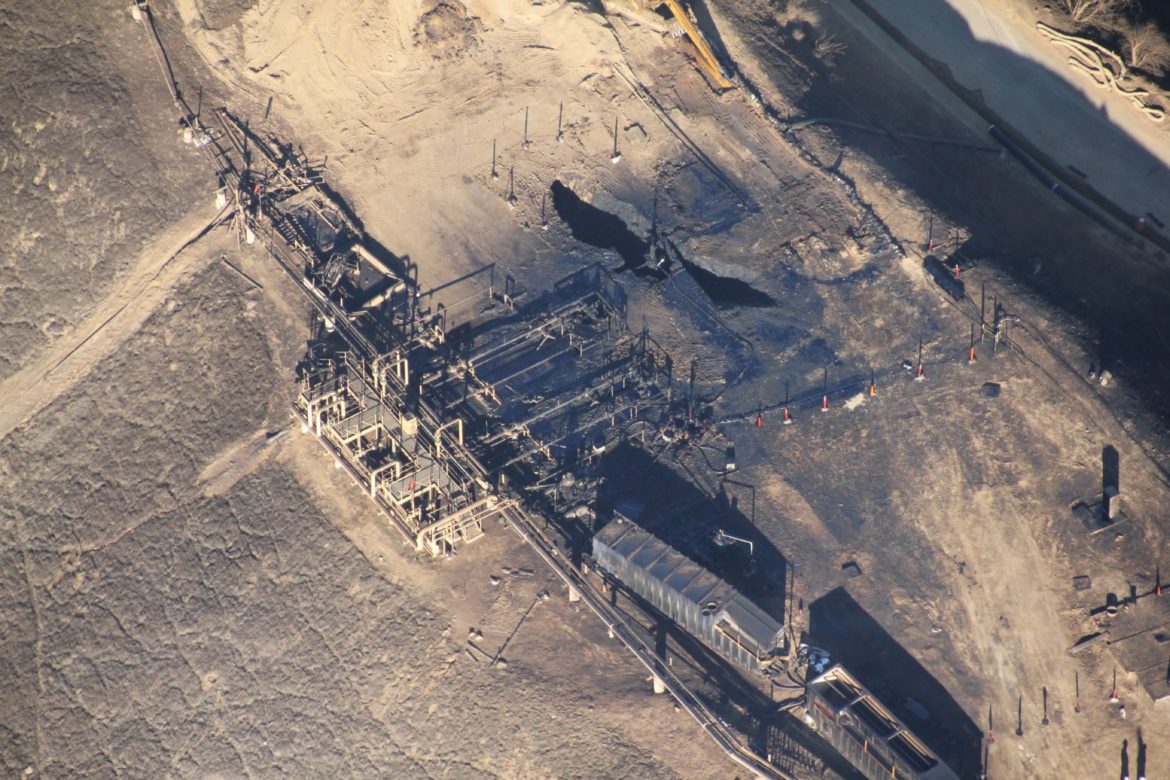
Image: Inside Energy
Fracking and other activities can trigger leaks that, for months at a time, discharge vast volumes of a colourless, odourless gas into the sky.
The offender is methane, which can be 80 times more efficient at maintaining heat than carbon.
The New York Times reports that researchers are preparing to launch a satellite that can pinpoint the location and timing of methane leaks. So, the leaks may be fixed as soon as feasible.
The satellite has the potential to reduce methane emissions from the oil and gas industry by as much as 50 percent.
Circulating Pumps for Reefs to Reduce Temperature
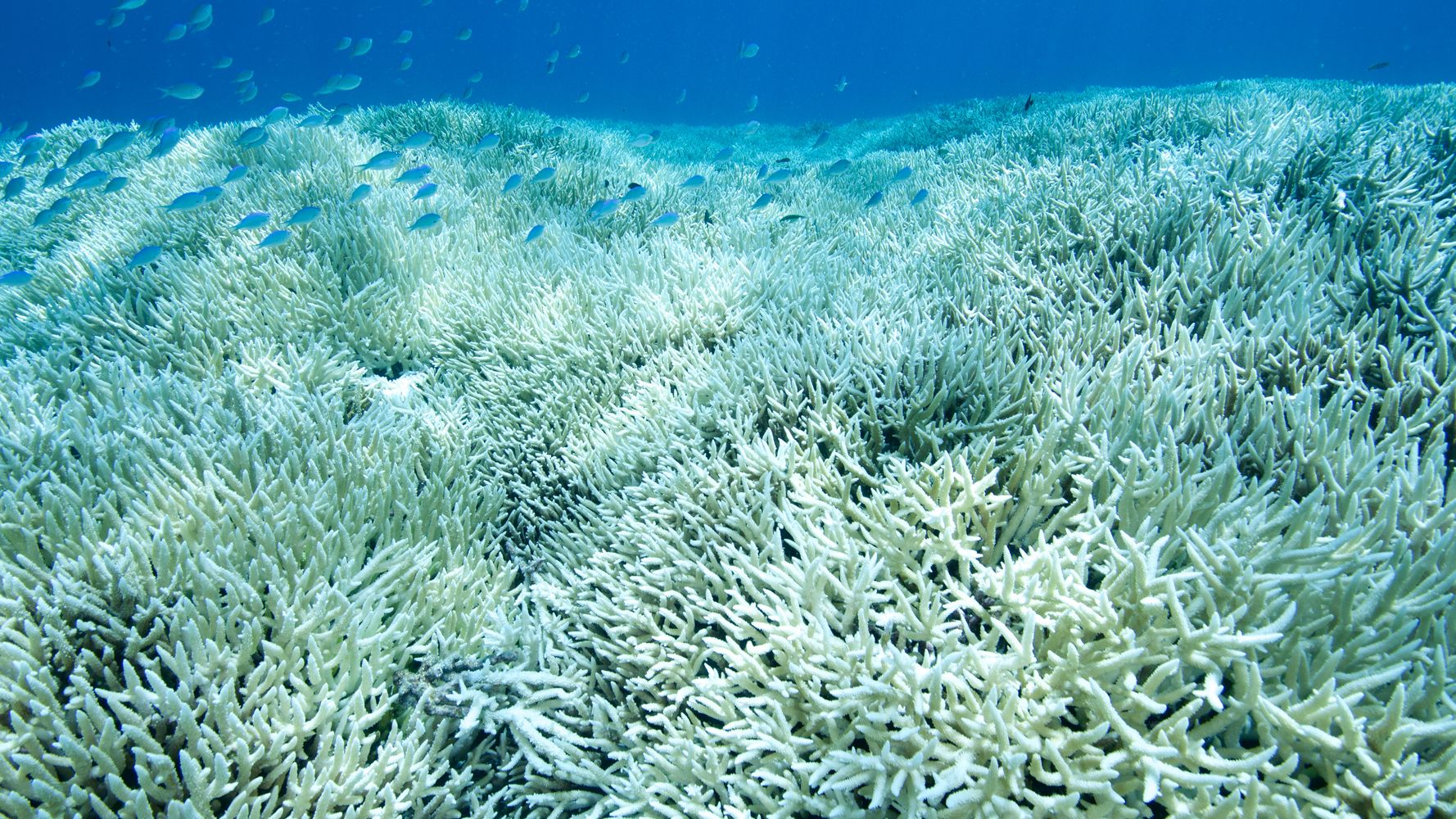
Image: Huff post
Increases in temperature of even two or three degrees Celsius pose an existential threat to coral reefs.
And as the temperature rises around the globe, coral reefs are dying off.
For example, an engineer by the name of Mo Ehsani is working on a plan to relieve coral by installing an undersea conduit that can pump cold water over reefs, so chilling them off and preventing a phenomenon known as coral bleaching.
While his proposal won’t stop climate change from becoming an even greater concern, it might help coral reefs around the world hold off further deterioration.
Plastic Eating Enzymes
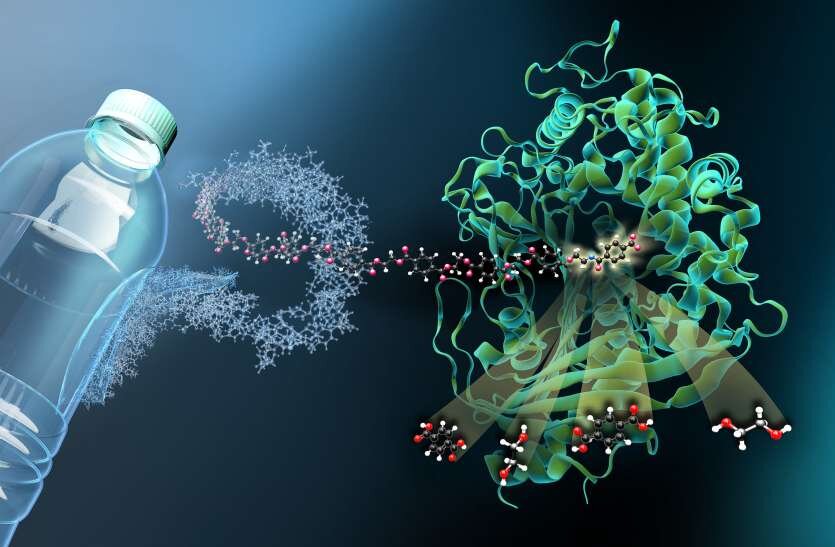
Photo credit: Institute of innovation
According to the present rate of production, there will be 12 billion metric tonnes of plastic trash in the world by the year 2050. That’s the weight of a medium automobile, or 1.6 metric tonnes, for every person on Earth.
There is a serious hazard to human health from the presence of plastic in our food and water supply, and all of this plastic is wreaking havoc on wildlife. Nonetheless, a chance scientific discovery may alter this for the better. A group of Japanese scientists accidentally created an enzyme that can degrade plastic in a few days, a significantly shorter amount of time than the typical hundreds of years it takes for plastic to decay. This “means we won’t need to dig up any more oil and, basically, it should minimise the amount of plastic in the environment,” Professor John McGeehan of the University of Portsmouth, UK, told the Guardian.
Futuristic Solar Panels
The Manhattan skyline can be seen in the background of this photograph taken on February 14, 2017, at the Brooklyn Navy Yard in New York City.
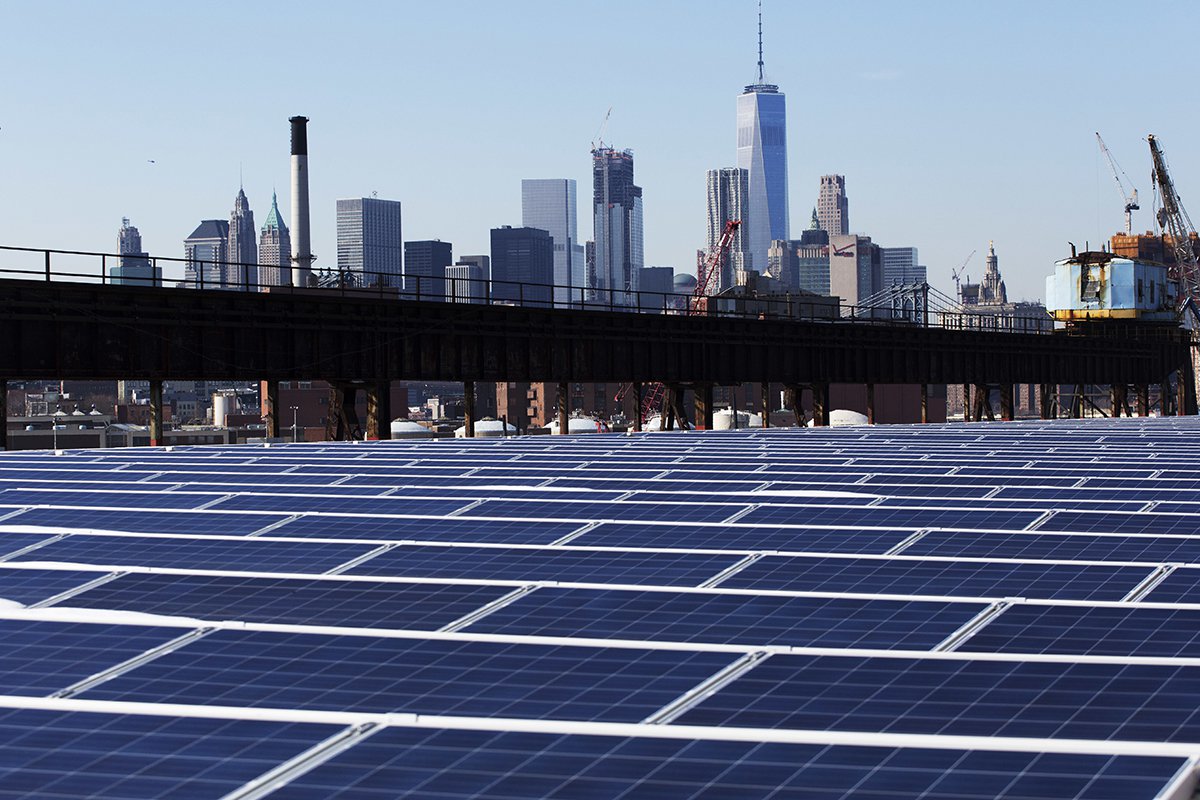
Image: Mark Lennihan/Associated Press
Typically, solar panels are placed on the tops of buildings or in expansive fields where they can get an unobstructed amount of sunshine.
However, researchers are always exploring novel methods of collecting solar power.
Researchers at Michigan State University think all windows and cell phone screens might start harvesting the sun’s energy soon, and new solar panels created in China can convert rainwater into usable electricity.
Geo-engineering for solar

Image: AP Photo/David Goldman, File
The last four years have been the warmest on record, and if current trends continue, global temperatures might rise by as much as 7.5 degrees Fahrenheit (4.8 degrees Celsius) by the end of the century, leading to catastrophic environmental consequences.
Researchers at Harvard propose releasing sun-blocking particles into the atmosphere to chill the world and delay the worst effects of climate change if a drastic reduction in global greenhouse gas emissions is not implemented.
According to Harvard geoengineer David Keith, who talked with Global Citizen, the same particles are spewed into the atmosphere by cars and factories, which may sound like apocalyptic technology.
According to him, the only viable method to stop climate change is for countries to reduce their emissions, and blocking the sun on purpose could give them that time they need.
Genetic Modification

Image: Genetic Literacy Project
Drought, flooding, and pests will become more likely as a result of climate change, which could eventually wipe out widely consumed crops like corn, coffee, and chocolate. In the meanwhile, genetic engineering has the potential to fortify crops against these disruptions by introducing traits that make them more resistant to things like pests, drought, and saltwater intrusion brought on by rising sea levels.
Despite widespread scientific agreement that genetically modified organisms (GMOs) are safe for human consumption, the controversy surrounding them has hindered their adoption around the world.
The Global Goals are a focus of Global Citizen’s advocacy work because they encourage novel approaches to environmental protection. You have the power to resolve this problem.
Think about this:
Each additional degree matters now because the world is 1.2 degrees warmer than it was before industrialization. Global warming of 2°C is predicted to increase the frequency and severity of extreme weather events such droughts, floods, wildfires, and storms.
Despite some progress, COP26 failed to take meaningful climate action last year. U.N. Secretary-General António Guterres warned that “our delicate world is hanging by a thread” during COP26, the United Nations’ most recent conference on climate change. As of now, a climate disaster is still only on the horizon. In the absence of immediate action, our chances of achieving net-zero will be nil.
Sometimes the future looks bleak. The good news is that everyone of us still has a great deal of power to alter this story’s course. All of us must take action now to address the climate disaster. Any new invention or discovery which make the world a better place is what we need.Sponsored by: 1xbet
